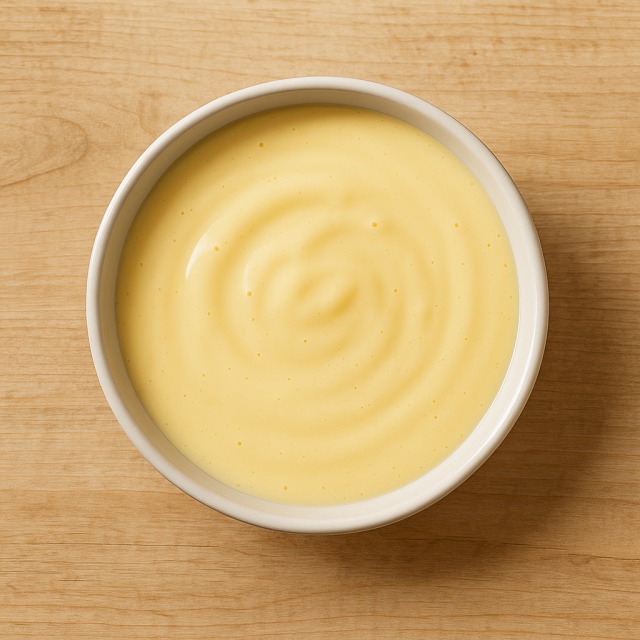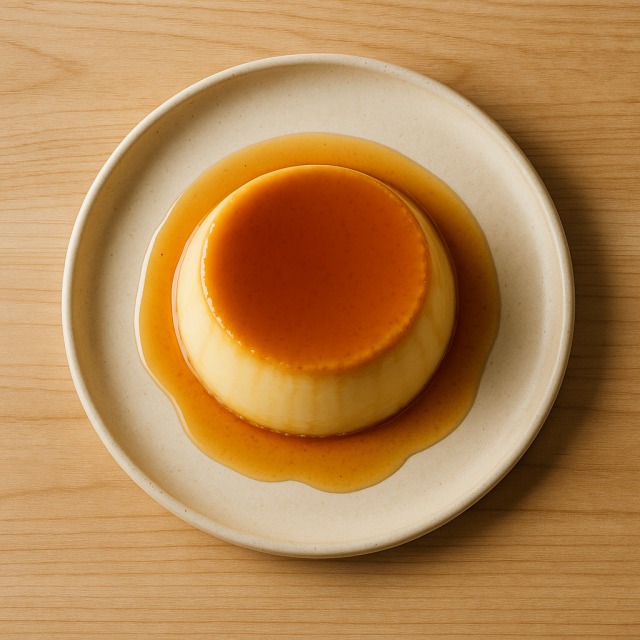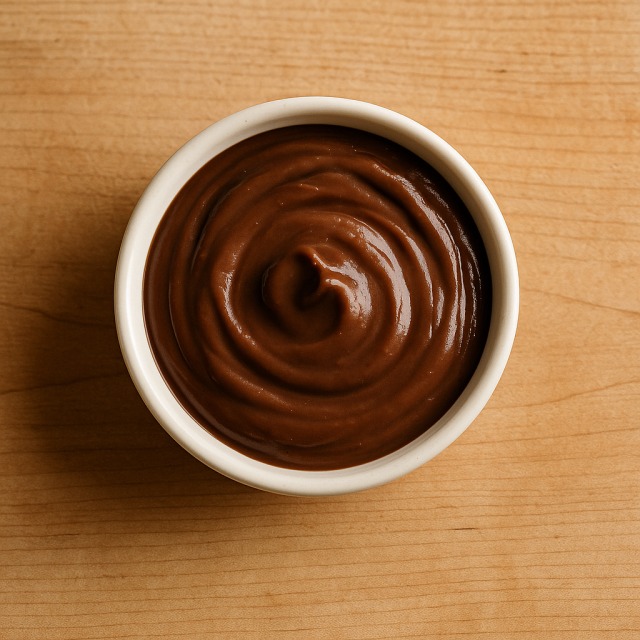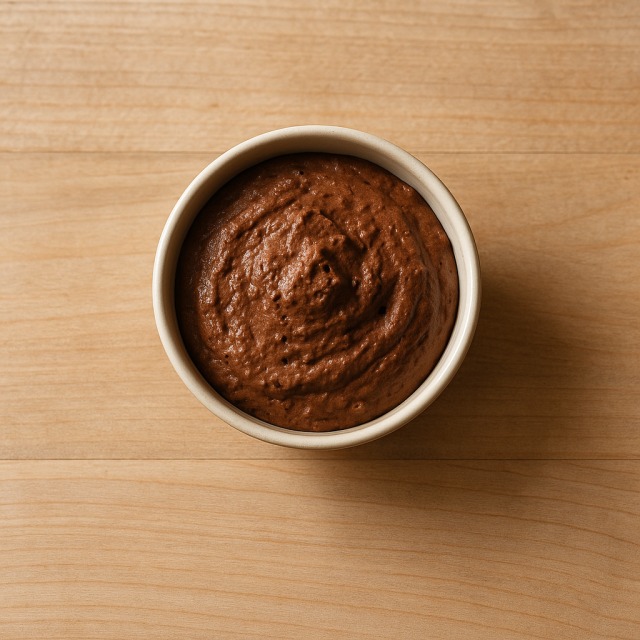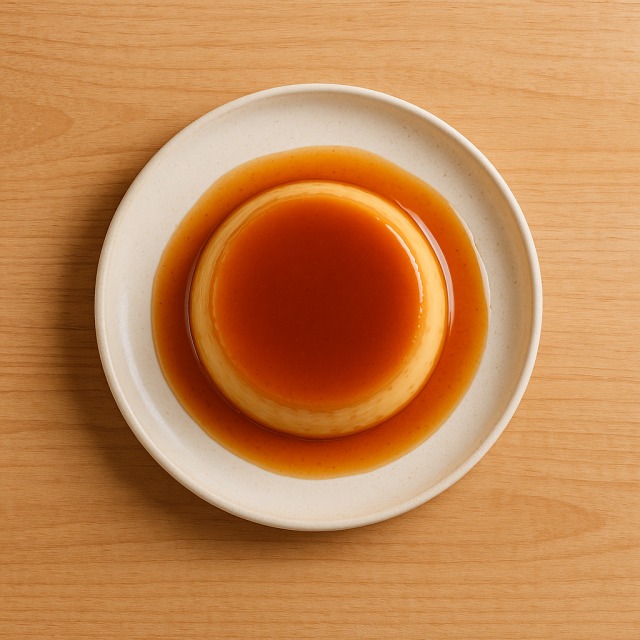Calorie Chart / Desserts / Floating island
How Many Calories Are in Floating island?
Calculation of the nutritional value & Recommended Dietary Intake of floating island
For g and a calorie requirement of kcal
| Calories 138 kcal | Proteins 5 g | Lipids 3.3 g | Carbohydrates 22 g |
| 7% | 7% | 5% | 8% |
Health benefits of floating island
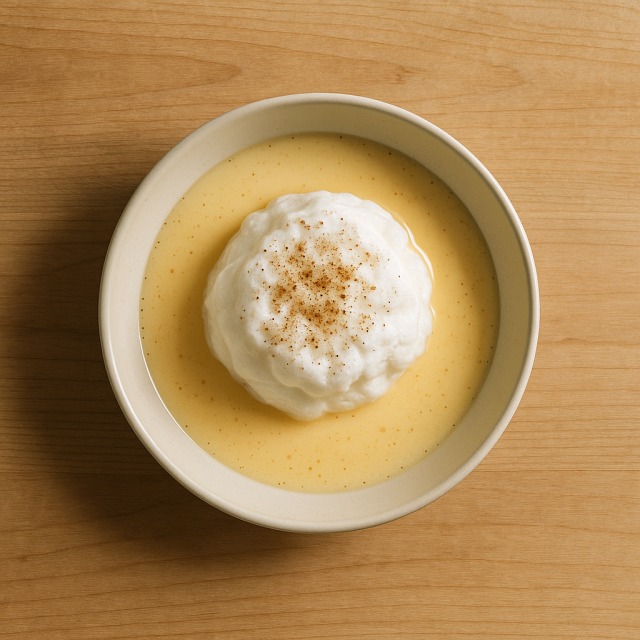
Floating island - 100g
Calories 138 kcal
Proteins 5 g
Lipids 3.3 g
Carbohydrates 22 g
Floating island is a moderate-calorie dessert: with 138 kcal per 100 g, it sits well below richer choices such as crème brûlée or brownie, yet it still satisfies a sweet craving. Those calories come mainly from carbohydrates, while the whisked egg whites provide around 5 g of protein per 100 g for muscle maintenance, with very limited fat.
The use of milk (often semi-skimmed milk) supplies calcium for bone health and vitamin B2 for energy metabolism, adding nutritional value without a big rise in calories. Egg yolk in the custard base contributes vitamin D, vitamin B12, and selenium—nutrients that are sometimes hard to find in desserts with comparable calories.
Thanks to its airy texture, the portion size looks generous, helping people who monitor calories feel satisfied psychologically. Historically, "île flottante" appears in French cookbooks of the 18th century; its light meringue floating on custard was considered an elegant way to end a meal without the excessive calories of pastry-laden desserts.
Because it is baked or poached rather than fried, no extra oil is needed, keeping calories in check while preserving the delicate vanilla flavour. That combination of moderate calories, quality protein, and essential minerals makes floating island a clever compromise between indulgence and nutrition.
Tips for incorporating floating island into a balanced diet
If you count calories, prepare your floating island with skimmed milk, halve the sugar, and sweeten the custard with a touch of vanilla pod; you will save up to 30 calories per serving without sacrificing taste. For a balanced plate, pair a small ramekin (about 120 g, roughly 165 calories) with a fresh bowl of fruit salad: the fibre from fruit slows sugar absorption and keeps overall calories reasonable.
Serving ideas: drizzle a tart raspberry coulis made from blitzed raspberry, or add diced mango for natural sweetness instead of caramel—each option lifts flavour while adding vitamins rather than empty calories. In a summer lunch, follow a lean main like chicken breast with steamed broccoli; finishing with floating island keeps the menu elegant and the total calories in check.
Looking for variety? Fold grated lime zest into the meringue for an exotic twist, or sprinkle toasted almond slivers: they add crunch, a little extra protein, and only a few extra calories. Remember that portion control matters; a generous ladle of crème anglaise can double the calories, so measure it out with a small ladle and you will stay on top of your dessert calories effortlessly.
Frequently Asked Questions
- How many calories are in floating island?
- Floating island provides 138 kcal per 100 g.
- Is floating island lower in calories than tiramisu?
- Yes, at about 138 kcal per 100 g, it delivers roughly half the calories found in tiramisu, which averages 250–300 kcal per 100 g.
- Can I reduce the calories in floating island?
- Use skimmed milk, replace part of the sugar with a natural sweetener, and limit the amount of caramel; these changes can trim 25–30 calories per 100 g.
- Does floating island supply any protein despite being a dessert?
- Yes, the whipped egg white adds about 5 g of protein per 100 g with minimal extra calories.
- Is floating island suitable for people watching their fat intake as well as calories?
- Definitely; it contains only about 3.3 g of fat per 100 g, keeping both fat and calories moderate compared with richer desserts such as molten chocolate cake.
Similar foods
Information provided by Calorie Menu may contain inaccuracies or errors. It cannot, under any circumstances, substitute medical advice or medication.
